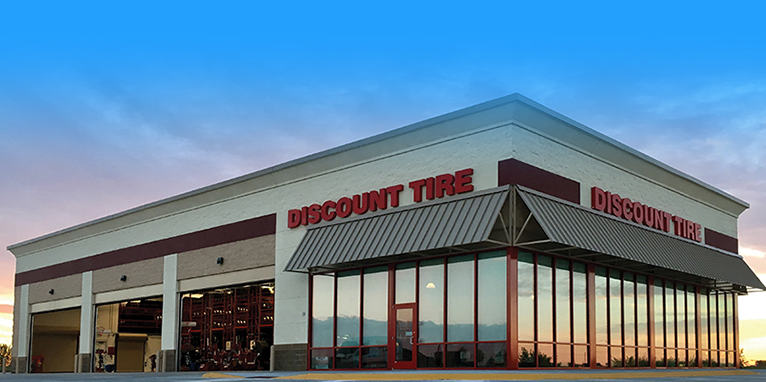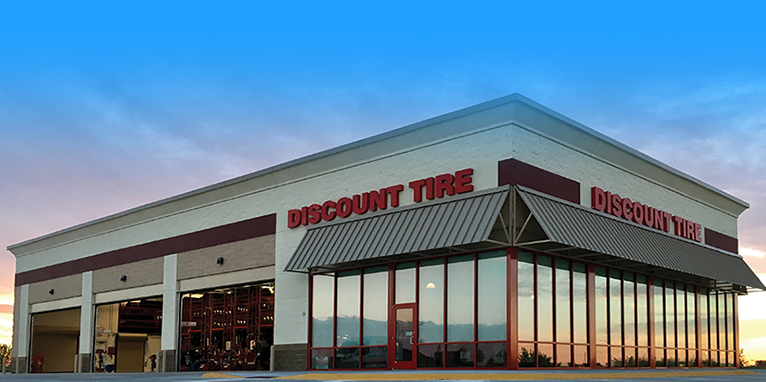Steve Rovniak: Can you provide some background on your career leading up to your CIO position at Discount Tire?
Gary Desai: I have spent all of my career in IT, including CIO roles at both large and small companies, at Fortune 50 companies like General Motors and Honeywell, and at small private companies like Trek Bicycle and Hubbard Milling.
I have about 30 total years of experience, the last 20 being in the auto industry in Detroit. I've worked in OEM parts manufacturing, aftermarket retail, so I have a lot of manufacturing, distribution, and consumer-related experience. Most recently, before I joined Discount Tire, I was doing IT consulting for several private equity firms.
Were you actively looking for a new position?
I was semi-actively looking. The private equity world was attractive for many reasons but I wanted to get back into a CIO position, and in addition, I really wanted a change in geography. I was interested to relocate to the South – either the Southeast or Southwest. Those were the reasons I was looking.
What did a job need to offer you for you to be interested?
 Number one would be transformation, a transformative job. I'm a very high energy kind of person. I am curious and always want to do new things. So, I was in search of a company that believes in using technology to drive the business.
Number one would be transformation, a transformative job. I'm a very high energy kind of person. I am curious and always want to do new things. So, I was in search of a company that believes in using technology to drive the business.
Also, I was hoping for a large private company, where you don't have to think quarter to quarter, where I’d be able to take a long-term approach, still speedy, but a longer-term, thoughtful approach.
How did you hear about the opportunity with Discount Tire?
Through networking. The CFO of the company reached out and called me. He and I met first, I learned about the position, and then things started moving forward from there.
What was Discount Tire looking for in their new CIO?
They had had three CIOs before me in just six years, so first of all, they wanted to be extremely careful to ensure they were hiring the absolute right individual.
This is a company where the average executive tenure is 25+ years, some even 40 years. The CFO has been here 32 years. The CEO, 31 years. Having another CIO turnover in the near future would be just too dramatic a change for them.
What else?
They wanted a business-oriented CIO with a lot of experience in automotive and retail, who understood program management, processes, people, who could partner with the business and fit in with their culture.
They needed a real people leader because it's a very employee-focused company. They really listen to their employees. They would give the new CIO carte blanche to do what he needed to do, but ideally, he would garner success for the company by helping the existing IT employees achieve their dreams. That is the mission of the company and they wanted to make sure of that those core values were aligned.
They wanted a true professional who really understands IT and how to get projects and programs going, and how bring stability to IT. During Thanksgiving 2019, the website was down for a considerable amount of time and people were unhappy about that.
|
About Discount Tire Founded in 1960 and headquartered in Scottsdale, AZ, Discount Tire is the world’s largest independent retailer of tires and wheels. Discount Tire serves customers at more than 1,070 stores in 36 states. |
Did you have an interview strategy?
I thought about it but I didn’t know too much about the company because Discount Tire is a private company. That's the interesting part of interviewing with a private company as opposed to a public company. How do you prepare? It's not so easy because you can look in the press, but the material available is very limited. But I did read that Discount Tire was opening at least 50 shops a year, every year, whether it's a recession, economic recovery, no matter what. That's a lot of shops so they must be doing something right in the hard-hit automotive retail business!
When you first arrived, was there anything that was ‘on fire’?
Nothing was on fire, but there were opportunities - enterprise programs opportunities, operational stability opportunities, people opportunities, and process opportunities.
First was the program opportunities. They were running 10 enterprise-wide programs, but they were struggling with velocity. They spent a lot of money on certain programs and they were not reaching their goals.
We needed to think about enterprise architecture. How did each of these 10 programs fit with the others? What should be done first? What should be done second based on our target architecture? That was one issue.
Next was stability. The old POS system kept going down, and a POS system becomes very important for a company that is adding 50 shops a year. How are you going to grow if your POS system cannot handle more shops? They had already started a new POS program, but they needed it to progress faster.
Where does that stand now?
We have since moved the POS system from the corporate data center to an outsourced data center in Dallas and Atlanta. We also bought a lot of infrastructure, so now we can grow over 50 shops a year for the next 3, 4, or 5 years and we don't have to worry.
What about on the people front, and roles in your organization?
We built up a whole enterprise architecture team, then we started looking at all our programs and all our systems truly from an architecture standpoint called OneDT, One Discount Tire. How does it all gel together? How do we get to the new cloud, SaaS, API, microservices-based architecture?
You can't get it done in a day, but we have the key players and we are building it. We recruited some people from AWS and other Fortune 50 companies.
After we had the architecture together, we attacked each of the enterprise projects one at a time, to turn them around and change them from red to green. It took a couple of months for each project, and we're doing the last one right now.
You joined the company shortly before COVID-19 appeared.
Yes, on January 28th, 2020.
Who do you report to?
I report to the CEO.
What is your headcount in IT?
450 FTEs, including employees and contractors.
How did you and fellow executives have to adjust in order to succeed?
Before COVID, we absolutely did not believe in remote work. We did not permit even one or two days of working from home as part of our normal policy. And we only hired in Scottsdale for corporate office staff, including IT.
On March 15th, the whole world changed for us. We had to move 600 people outside of the corporate office overnight and give them laptops and provide them with bandwidth to work remotely, which was 180 degrees different from what our culture was.
The changes in our shops were even greater. Before, customers used to walk inside the store, talk to our salesperson, talk about tires, step behind the counter and look at the screen, configure the tire and get a slap on the back, shake hands, and write a check. Now they prefer to not get out of the car or even roll the window down.
We had to change all our systems to provide customers with a touchless experience. This is very, very different from how we used to do business before COVID, but it is what customers wanted and expected.
We had to figure out how to provide that touchless experience where we don't have to take a physical credit card, we don't have to get a signature, but we offer appointments and take payment up front on the website, and customers are met by a curbside greeter holding a mobile device to check them in. If they do walk into the showroom, we have two screens – one for the salesperson, another for the customer who is standing six feet away – so they can see the same information. All those changes had to be done relatively overnight.
Given the company’s previous culture of working in person in the office five days a week, will Discount Tire go back to that when it's safe to do so?
We're thinking through all that. Do we really all need to be in the office every day? If not, can we look for talent nationally rather than only in Scottsdale, or without paying to move them to Scottsdale? Can we do that? We haven't made any decisions.
What are the keys to attracting, hiring, and retaining top IT talent in what was, and still is, a very competitive marketplace?
You have to have your brand, you have to go to seminars, speak about your company, what's happening in your IT department. You have to have some articles published about your company, and the good things that are happening there. I am a member of SIM, Arizona CIO, and other communities here, but this is still a new town for me.
I've come to know many of the CIOs here in town, but you don't want to just steal local talent from other CIOs. You have to attract people from other regions and move them to the valley. That's what I've been trying to do. We have hired at least 30 people since I've been here, and we have 50 more openings to fill.
So it's a transition. I'm taking out a lot of staff augmentation and converting them to employees. We have what it takes to attract the best. We are a great company, a profitable company. Our compensation is competitive, and we believe in technology to run the business. We have all the ingredients.
How do you know when your IT organization is succeeding?
The stakeholders will start telling you. The stakeholders will tell you whether the IT is serving their purpose or not. They will tell you informally, and then you have to dig deeper.
“Regrettable turnover” is something else I watch. I want zero regrettable turnover.
We're very much an outcome-based IT department. For example, we’re not just putting money into building the website. Rather, what is the customer journey we're looking for? What are the conversions we are looking for from website visits? What is the revenue we're looking for? Let's focus on that, and let's put money into the web to make sure that those metrics are being achieved, those outcomes realized. Now that we have the latest architecture, how do we use it to actually increase the conversion rates? This is what IT will be measured on. We're not 100% there yet, but we are getting there.
What advice do you have for IT leaders who are interested to find their next great CIO job?
Be very clear on what you want. So for example, I was fairly clear that I wanted to get to the South if I could, and be with a large private company.
Also, recognize that networking is the way to get to new jobs 80 or 90 percent of the time. Networking with the recruiters like Heller Search, networking with your peers. Build your brand through professional societies and speaking engagements.
And finally, you do have to be a little patient. Don't jump at the first opportunity. The right opportunity will take a little bit of time, but it is out there. Your next great job lies at the intersection of these three circles: What does the company want to get done? What are you good at getting done? And what is it that you want to do?
About Gary Desai
Gary Desai is the CIO for Discount Tire, the largest independent tire and wheel retailer in the world. Previously, Desai was an independent technology consultant in the private equity sector, and he was SVP & CIO of Icahn Automotive Group from 2014 – 2018.


Written by Steve Rovniak
Steve Rovniak served as Executive Director, Marketing and Media at Heller Search Associates from 2012 to 2023.



